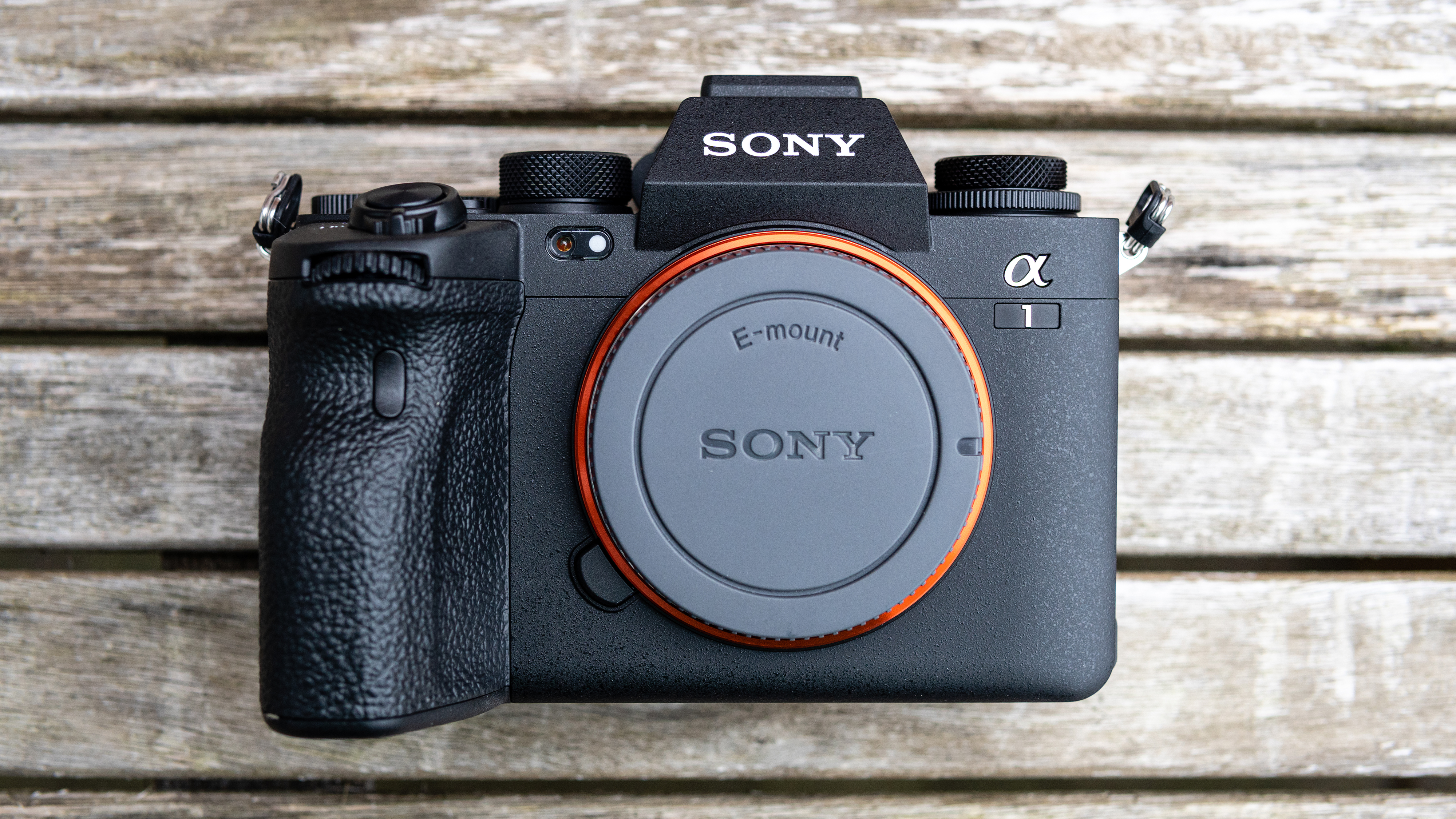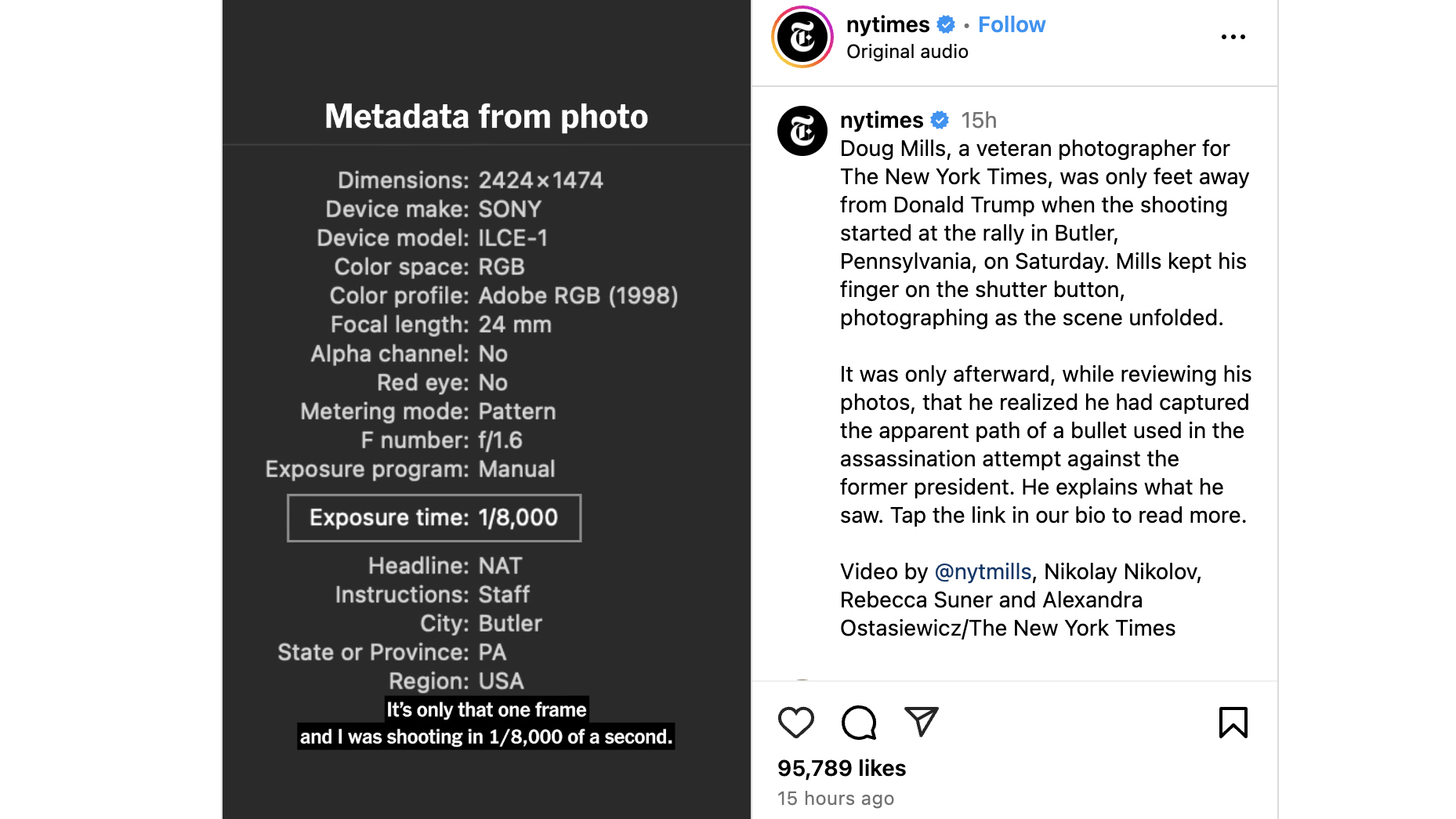'One in a million'– pro photographer reveals how he took the President Trump 'flying bullet' photo with a Sony A1

A pro photographer has revealed exactly how he took the incredible photo (below) of what looks like the path of a bullet used in the recent assassination attempt on former President Donald Trump at a rally in Butler, Pennsylvania on Saturday 13.
In a post on The New York Times' Instagram page, the newspaper's veteran photographer Doug Mills revealed the camera and exact settings he used to take the shot as he was standing just feet away from the action.
Thanks to a screenshot showing the photo's Exif (Exchangeable image file format) data, we can see that Mills used a Sony A1 – which remains Sony's flagship mirrorless camera – and captured the photo at a 1/8000s shutter speed, which is the camera's maximum shutter speed when using the mechanical shutter.
To reach that speed, Mills had to shoot wide open at f/1.6 with a 24mm focal length. He also used multi-pattern metering (which decides the exposure based on the whole frame, as opposed to center or spot metering) and was naturally shooting in manual mode for maximum control.
Photo by New York Times photographer Doug Mills shows bullet flying just behind Trump's head. pic.twitter.com/0ncIBC0i1vJuly 14, 2024
As Mills explained: "I just happened to have my finger on the shutter and I heard the pops and just kept shooting. I didn't know what I'd captured, but when I got to my laptop, I can see that bullet flying behind his head, because it's definitely not in the frames right before it and it's not in afterwards – it's only that one frame. I was shooting at 1/8000s – it captured that streak behind him".
Anticipation and preparation are a key component of being a pro press photographer, as Mills added: "I've covered the President for 40-plus years and I always know which way they come on stage and which way they go off. The closest stairs were over to my right, so I ran over there and witnessed him being helped up to his feet".
A 'one in a million' photo

It isn't completely clear whether the photo above shows the bullet itself or, more likely, the bullet's vapor trail.
Sign up for breaking news, reviews, opinion, top tech deals, and more.
In a follow-up article on The New York Times, the retired FBI special agent and firearms expert Michael Harrigan said the photo "absolutely could be showing the displacement of air due to a projectile", and some ballistic math suggests that 1/8000s shutter speed would make it possible to capture the bullet in those particular circumstances.
However, despite the Sony A1's fast maximum shutter speed and 30fps burst shooting mode, it's also a very rare event. Capturing a bullet in flight usually requires a high-speed camera and, as Harrigan explained, "catching a bullet on a side trajectory as seen in that photo would be a one in a million shot". But he also concluded that "if that's not showing the bullet's path through the air, I don't know what is".
Some other recent examples show that it is possible to capture bullets using the best professional cameras. In 2022, the Swedish photographer Göran Strand used the Nikon Z9's 1/32,000s maximum shutter speed and 120fps burst mode to capture a bullet leaving a biathlon rifle.
In response to that shot, the pro photographer Peter Russell wrote a lengthy breakdown of how difficult it is to shoot a speeding bullet even with the Nikon Z9, while also pointing out that slower shutter speeds (of between 1/8,000s to 1/16,000s) can actually improve your chances capturing the shot (albeit while showing more movement in the shot, like the Trump photo above).
So while freezing bullets in flight does usually require carefully orchestrated setups and special triggers, it is also possible with the right capture and a generous dose of luck – which appears to be the case with this shot from the NYT's Doug Mills.
You might also like...

Mark is TechRadar's Senior news editor. Having worked in tech journalism for a ludicrous 17 years, Mark is now attempting to break the world record for the number of camera bags hoarded by one person. He was previously Cameras Editor at both TechRadar and Trusted Reviews, Acting editor on Stuff.tv, as well as Features editor and Reviews editor on Stuff magazine. As a freelancer, he's contributed to titles including The Sunday Times, FourFourTwo and Arena. And in a former life, he also won The Daily Telegraph's Young Sportswriter of the Year. But that was before he discovered the strange joys of getting up at 4am for a photo shoot in London's Square Mile.